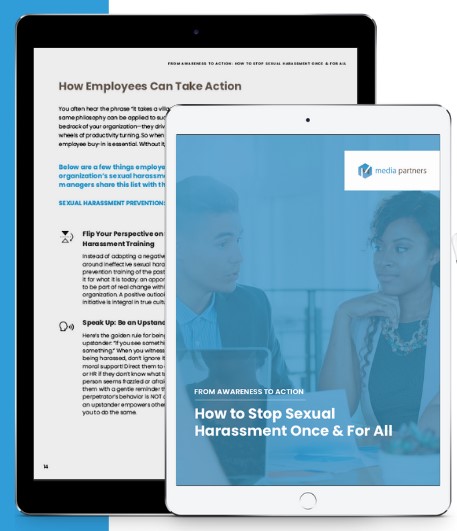
Hugging is one way that people form connections with others. A hug can be a way to greet, comfort, or demonstrate care for someone.
But not everyone is a “hugger,” and not all hugs are experienced the same, especially in the workplace. It is important to understand the ways in which hugs can cross people’s physical boundaries and become sexual harassment.
When can hugs become sexual harassment?
Sexual harassment includes “unwelcome sexual advances, requests for sexual favors, and other verbal or physical harassment of a sexual nature” (EEOC). People of all sexes can experience sexual harassment, which can include hugs. In order for a hug in the workplace to be illegal, it needs to be unwelcome and frequent or severe. If a hug is unwelcome and frequent or severe, a person could be fired for it.
- “Unwelcome” refers to the receiver of the hug not being okay with the hug. Even if the giver of the hug did not intend to make the receiver of the hug feel uncomfortable, if the receiver did not want the hug to occur, it could be considered sexual harassment.
- “Frequent” refers to how often the hug is occurring. Generally, a single, unwanted hug would not be considered sexual harassment.
- “Severe” refers to the significance of the hug. Various factors can increase or decrease the severity of unwelcome hugs. For instance, due to the power imbalance between supervisor and supervisee, a supervisor hugging their supervisee would be considered more severe than two coworkers hugging. Unwelcome hugs that include other unwelcome behaviors, such as massaging, patting, kissing, and ear whispering, would also be more severe than an unwelcome hug without those additional elements.
How can I prevent a hug from being sexual harassment?
- If you are a “hugger” and want to be able to hug your coworkers, it’s important to practice affirmative consent. Affirmative consent means seeking permission to do something before you do it, and then being respectful of how the other person responds to your request. You can do this by asking, “Would it be okay if I hugged you?” or “Would you be okay with a hug from me?" Then, you need to pay attention to how the person responds. If they react in a way that indicates they may be uncertain or not interested, such as saying, “I guess so,” or “I’m not sure,” shrugging or backing away from you, or saying “no” or “I’m not a ‘hugger’”, you should not hug them. If someone declines your hug, you should not make them feel bad for not wanting to be hugged by you. Instead, you should thank them for their honesty and remember their physical boundaries for the next time you interact with them.
- Generally, supervisors should avoid hugging their supervisees. Even if a supervisee indicates they are okay with a hug, it can be difficult to know why they are agreeing to the hug. It could be because the supervisee is genuinely fine with being hugged. However, it could also be because they do not feel like they can say “no” to the request due to the power imbalance.
- Clients or customers should only be hugged if they are the ones initiating the hug. However, just because a client or customer initiates a hug doesn’t mean you have to participate in it. Like in your interactions with coworkers and supervisors, you can set a boundary and tell them “no.”
If you are ever in doubt about whether someone would be okay with a hug, you should ask them. If their response to your question is unclear, then you should not hug them.
We should all want to be employees in workplaces that respect boundaries, including physical boundaries. Following these guidelines before hugging someone is one way that we can contribute to a positive workplace culture and prevent sexual harassment.
Our free How to Stop Sexual Harassment Once & For All eBook
contains tips and takeaways on various things employees, managers and organizations can do to prevent sexual harassment at work.
Download this helpful resource today.





